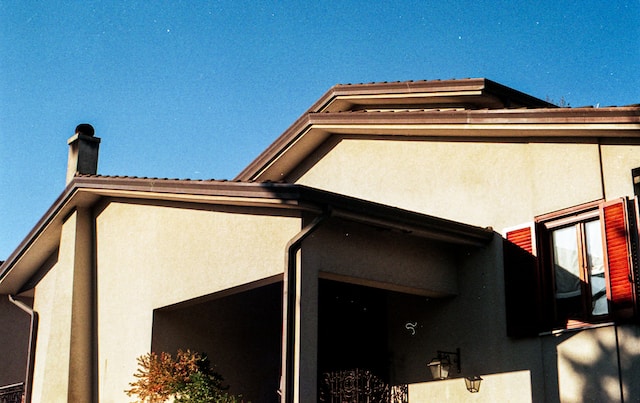Regarding gutters, there’s a lot of lingo specific to the industry. Selecting the ideal gutter system for your house can be easier if you know these phrases.
Gutter materials and profiles can impact the look of your property. Here are some of the most common gutter types: K-style, Downspout Elbow (angled piece that fits at the bottom of a downspout to direct water away from your house foundation), Hangers (strips of metal that support a gutter and prevent sagging), and Half-Round gutters.
Aluminum
Aluminum gutters are a common choice for homes because they’re inexpensive and don’t rust. They’re also lightweight, holding up too much water without getting too heavy or sagging.
Gutter systems made from aluminum are usually painted to match the color of the house or roof. They can also be customized with accessories like gutter downspout elbows, end caps, and downspout extensions to make the gutter system more efficient.
Seamless aluminum gutters are made from a flat coil shaped into different gutter shapes by a machine. Some popular styles include K-style and half-round gutters. They can also be shaped into custom designs for specific roof lines or aesthetic preferences. In terms of durability, seamless aluminum gutters come in various thicknesses. Thinner gutters show wear and tear more quickly than thicker options, so choosing a heavier gauge of aluminum will help them maintain a cleaner appearance for longer.
Stainless Steel
Stainless steel gutter materials are known for their durability and longevity, as they can hold up to even the most severe weather and temperature fluctuations. These gutters are also rust-resistant, making them an excellent choice for homeowners who want to keep maintenance and repair costs at a minimum.
However, they are heavy compared to aluminum and galvanized steel gutter products, requiring sturdy hangers and brackets to support them. They also conduct heat more quickly than other gutter materials, so they can become warm during summer and colder during winter, resulting in possible ice dams.
Regardless of the material used, all gutters serve the same purpose—to direct rainwater away from the foundation and siding of your home. However, choosing the suitable gutter material for your unique climate and architectural style can make a massive difference in the gutter installation Oregon City process, maintenance requirements, and long-term cost of your gutter system.
Galvanized Steel
Gutter systems made of galvanized steel are strong and durable, with the added benefit of being rust-resistant. They can also be painted to match a roof’s color or style preference. Compared to aluminum, gutter systems made of this material are less likely to leak as the steel can resist cracking and leaking due to thermal changes.
On the other hand, aluminum gutters do not fare so well in these conditions as they can develop cracks at the joints. This damage can lead to leaks and stress on the gutter hangers, which may come loose over time.
Steel gutters are also suitable for areas prone to frequent hailstorms, as they can better resist denting. They can be prone to rusting but can be protected from this problem with a zinc coating. These types of gutters are available in either seamed or seamless styles. Another unusual choice gaining popularity is Galvalume, steel covered with a zinc and aluminum mixture.
Copper
Copper is a luxurious choice for gutters that will enhance the beauty and value of your home. It is highly durable and rust-resistant, making it an excellent choice for any home. It is also one of the most sustainable metals available.
Skilled craftsmen use specialized tools to shape copper sheets into the desired gutter profile. They make sure that the sections fit the roofline and any architectural features. They also ensure the curves are consistent to avoid kinks and warping that could interfere with water flow.
Once installed, copper gutters can be finished with a patina that is either dark gray or a greenish color. This protects the gutter from corrosion and helps to minimize the growth of mosses and lichens that can cause blockages. They can also be sealed with a clear protective coating. Copper has a low thermal coefficient of expansion, just like aluminum. This implies that expansion joints are unnecessary for installation on uninterrupted straight lengths.
